| July 24, 2007 |  |
our time will build eternity |
| Previous Issues | Jul 23 | Jul 20 | Jul 19 | Jul 18 | Jul 17 |
Throttling Back To The Moon Huntsville AL (SPX) Jul 24, 2007
Huntsville AL (SPX) Jul 24, 2007Accelerating from 0 to 60 then slowing down for a stop light is no problem for an ordinary automobile. But if you were piloting a rocketship, it wouldn't be so easy. Most rocket engines are designed to burn full-on (liftoff!) or full-off (coasting through space) with no in-between. And that can be a problem--namely, how do you land this thing? Throttling is crucial for a planetary lander. ... more Researchers Produce Images Of Gases Escaping From Jupiter Moon Io  Boston MA (SPX) Jul 21, 2007
Boston MA (SPX) Jul 21, 2007Boston University researchers have published the first clear evidence of how gases from Jupiter's tiny moon's volcanoes can lead to the largest visible gas cloud in the solar system. Jupiter, the largest planet in the solar system, has a moon named Io that is just 100 km larger in radius than Earth's Moon. According to lead researcher Michael Mendillo, professor of electrical and computer engine ... more From Dark Obscurity A Tiny New Saturnian Moon Comes To Light  Boulder C0 (SPX) Jul 21, 2007
Boulder C0 (SPX) Jul 21, 2007Like a hawk's eyes, the high resolution cameras on NASA's Cassini spacecraft have spotted yet another small, previously unknown moon circling giant Saturn and one which may indicate the existence of other small bodies in the same region. The tiny world--presently thought to be only about 2 kilometers (1 mile) wide--orbits at 197,700 kilometers (122,800 miles) from Saturn. Until a name for the mo ... more Where To Next For The NASA Discovery Program  Cameron Park CA (SPX) Jul 21, 2007
Cameron Park CA (SPX) Jul 21, 2007The next full-scale mission to be selected for the Discovery Program will be selected in early October, from a set of three finalists including a near-Earth asteroid sample-return mission (which would be very rewarding scientifically, but is already perilously close to the program's official mission cost limit), or a Venus orbiter or lunar orbiter (which would be cheaper, but also somewhat less ... more NASA Robots Practice Moon Survey In The Arctic Circle  Moffett Field CA (SPX) Jul 21, 2007
Moffett Field CA (SPX) Jul 21, 2007Two NASA robots are surveying a rocky, isolated polar desert within a crater in the Arctic Circle. The study will help scientists learn how robots could evaluate potential outposts on the moon or Mars. The robots, K10 Black and K10 Red, carry 3-D laser scanners and ground-penetrating radar. The team arrived at Haughton Crater at Devon Island, Canada, on July 12 and will operate the machines un ... more |
rocketscience
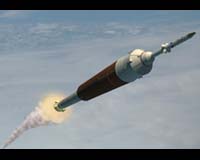 cassini 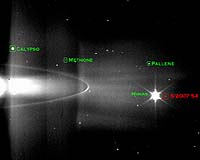 water-earth 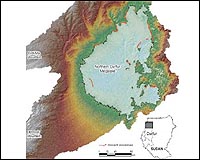 |
 Pasadena CA (SPX) Jul 18, 2007
Pasadena CA (SPX) Jul 18, 2007Saturn's distinctive moon Iapetus is cryogenically frozen in the equivalent of its teenage years. The moon has retained the youthful figure and bulging waistline it sported more than three billion years ago, scientists report. "Iapetus spun fast, froze young, and left behind a body with lasting curves," said Julie Castillo, Cassini scientist at NASA's Jet Propulsion Laboratory, Pasadena, Calif. ... more Moonshine Can Reflect Lunar Composition  Phoenix (UPI) Jul 18, 2007
Phoenix (UPI) Jul 18, 2007U.S. scientists determined that they can predict concentrations of certain minerals on the moon by comparing variations in reflected light. Samples of lunar rocks returned by U.S. astronauts show large variations in titanium oxide concentrations, suggesting complex compositional zonation within the lunar mantle. M.S. Robinson of Arizona State University and colleagues, noting ilminite has ... more NASA Awards Upper Stage Engine Contract For Ares Rockets  Washington DC (SPX) Jul 17, 2007
Washington DC (SPX) Jul 17, 2007NASA has signed a $1.2 billion contract with Pratt and Whitney Rocketdyne Inc., of Canoga Park, Calif., for design, development, testing and evaluation of the J-2X engine that will power the upper stages of the Ares I and Ares V launch vehicles. The contract includes ground and test flight engines. It continues work that began on June 2, 2006, under a preliminary letter contract with Pratt and W ... more Rocket Tests Move NASA Closer To The Lunar Vision  Cleveland OH (SPX) Jul 11, 2007
Cleveland OH (SPX) Jul 11, 2007A liquid oxygen-hydrogen pump fed engine developed to demonstrate advanced rocket technologies for future space vehicles achieved a major technical milestone in throttling capability. The engine was designed to demonstrate successful throttling from full power down to 10 percent of its thrust. This flexibility to control the flow of fuel through an engine is necessary for a lunar lander, allowin ... more |
telescopes
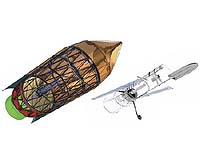 lunar 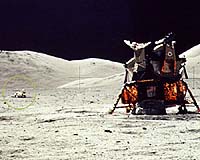 cassini 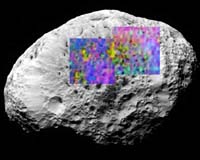 |
 Huntsville AL (SPX) Jun 29, 2007
Huntsville AL (SPX) Jun 29, 2007On Saturday night, June 30th, step outside at sunset and look around. You'll see a giant moon rising in the east. It looks like Earth's moon with the usual craters and seas, but something's wrong. This full moon is strangely inflated. It's huge! You've just experienced the Moon Illusion. Sky watchers have known for thousands of years that low-hanging moons look unnaturally big. Cameras don't see ... more NASA Selects Reynolds To Design Emergency Egress System For Orion Astronauts  Jacksonville FL (SPX) Jun 28, 2007
Jacksonville FL (SPX) Jun 28, 2007Reynolds, Smith and Hills, a leading facilities and infrastructure consulting firms whose client-centered program structure provides value-added solutions to clients around the world, announced it has been selected by NASA to design the Emergency Egress System for Orion, the next generation space exploration vehicle that is expected to launch in 2014. The new escape system will allow astronauts ... more Thinking Big About Space Telescopes  Washington DC (SPX) Jun 27, 2007
Washington DC (SPX) Jun 27, 2007How big? Consider the following: Ares V will be able to place almost 130,000 kg (284,000 lbs; 8% more than the Saturn V rocket of the 1960s) into low Earth orbit. Designed to deliver cargo to the Moon, the rocket would be large enough to carry primary mirrors 8+ meters wide. For comparison, Hubble's mirror measures 2.4 m. "How does a typical astrophysicist work?" Stahl asks. ... more Moon Jobs May Crater Suggests Rutgers-Camden Researcher  Camden NJ (SPX) Jun 25, 2007
Camden NJ (SPX) Jun 25, 2007Think your job is tough? Can't wait for summer vacation to "get away from it all"? Just wait, says a Rutgers University-Camden researcher. In the not-too-distant future, some jobs will challenge workers placed far, far away from it all. On the moon, in fact. According to Chester Spell, an associate professor of management at the Rutgers School of Business-Camden, the lunar settlements of tomorrow ... more
|
lunar
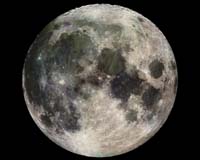 lunar 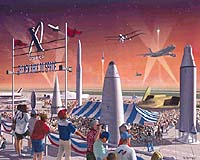 telescopes 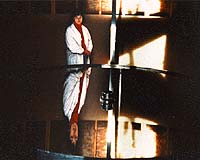 |
| Previous Issues | Jul 23 | Jul 20 | Jul 19 | Jul 18 | Jul 17 |
| The contents herein, unless otherwise known to be public domain, are Copyright 1995-2007 - SpaceDaily. AFP and UPI Wire Stories are copyright Agence France-Presse and United Press International. ESA Portal Reports are copyright European Space Agency. All NASA sourced material is public domain. Additional copyrights may apply in whole or part to other bona fide parties. Advertising does not imply endorsement, agreement or approval of any opinions, statements or information provided by SpaceDaily on any web page published or hosted by SpaceDaily. Privacy statement |